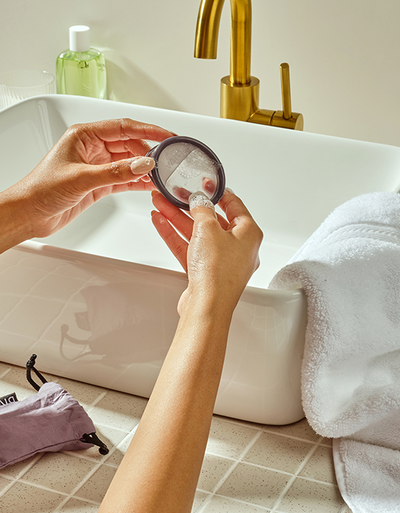
In this article /

Hormones are our master messengers, coordinating and regulating functions throughout the body. From time to time, we may experience symptoms of fluctuations that come with natural hormone balance including weight gain, emotional disturbances like anxiety and depression, low energy, irregular periods, and challenges with fertility.
Below you’ll learn all about these different hormones and how they function throughout our bodies.
The Endocrine System
The endocrine system is a complex network of glands and hormones that help to regulate bodily functions, including:
- Growth and development. Growth hormones stimulate our development as children and adolescents and thyroid hormones play a role in metabolism and energy production throughout our whole life.
- Reproductive health. Hormones produced by the endocrine system, such as estrogen and progesterone, help to regulate the menstrual cycle.
- Metabolism. Insulin and thyroid hormones help regulate metabolism and energy production.
- Mood and behavior. Hormones like cortisol, adrenaline, serotonin, dopamine, and oxytocin contribute to our mood and behavior.
- Response to stress. The body’s response to stress includes the release of hormones such as cortisol to help the body cope with stressful situations.
Overall, the endocrine system is crucial for maintaining homeostasis (natural hormone balance) in the body. Once we know about how it functions, we can look more closely at the individual hormones that it makes.
Hormones Naturally Communicate
Hormones are master messengers because they communicate with cells or organs that are located far from the gland that produced them. For example, hormones produced by the pituitary gland in the brain can affect the function of the ovaries located in the pelvis.
Hormones also act on a wide range of cells and organs allowing them to regulate a range of bodily functions. For example, insulin, a hormone produced by the pancreas helps metabolize carbohydrates, proteins, and fats, while thyroid hormones produced by the thyroid gland, affect our metabolism, heart rate, and body temperature.

Female Reproductive Hormones
The main female reproductive hormones include:
- Estrogen: Produced by the ovaries and plays a role in the regulation of the menstrual cycle.
- Progesterone: Produced by the ovaries and the placenta during pregnancy. It helps to regulate the menstrual cycle and prepare the body for pregnancy.
During the menstrual cycle, progesterone levels rise after ovulation to help thicken the uterine lining and create a supportive environment for a fertilized egg. If pregnancy does not occur, progesterone levels drop, causing the uterine lining to shed.
Our Other Sex Hormones
- Testosterone: While testosterone is typically thought of as a male hormone, it is also present in women in small amounts. It is produced by the ovaries and the adrenal glands, and it plays a role in the development of female secondary sexual characteristics like hair growth, as well as libido.
- Follicle-stimulating hormone (FSH): Produced by the pituitary gland and stimulates the development of eggs in the ovaries. FSH levels fluctuate during the menstrual cycle, with levels being highest at the beginning of the cycle.
- Luteinizing hormone (LH): Produced by the pituitary gland and plays a role in the menstrual cycle and the release of eggs from the ovaries. LH levels rise sharply just before ovulation, causing the ovary to release an egg (ovulation).
- Prolactin: Produced by the pituitary gland and stimulates milk production in the breasts during pregnancy and lactation.
It’s important to note that the levels of these hormones can fluctuate due to various factors. This can include age, stress, diet, and amount or intensity of exercise. If you are experiencing symptoms or have concerns about your hormone levels, it is important to consult a healthcare professional for guidance, blood testing, and treatment.
Supporting Natural Hormone Balance
Now that you understand the different types of hormones and how they contribute to different bodily functions, you may be wondering what you can do support natural hormone balance in your body.
If you suspect a hormonal imbalance, talk to your doctor. From there, consider targeted approaches to nutrition, exercise, and stress reduction. Don’t forget that hormone fluctuations are normal.
If you’re seeking homeostasis, here are some things you can try:
- Manage your stress and improve sleep quality by balancing blood sugar throughout the day and supporting daily bowel movements. (4 Happy Hormone Tips)
- Learn how cortisol impacts your sleep cycles and implement stress reduction techniques daily. (Stress & Sleep for Hormone Balance)
- Work cyclically and support natural hormone balance by changing up your exercise and nutrition depending on which phase of the menstrual cycle you are in. (Cycle Syncing Workouts & Nutrition)
- Maximize productivity by working harder when your energy is higher and slowing down when your hormones naturally decline. (Cycle Syncing Your Goals)
- Minimize symptoms of perimenopause/menopause by understanding what’s happening and supporting with the necessary nutrients. (Perimenopause & Hormone Balancing)










